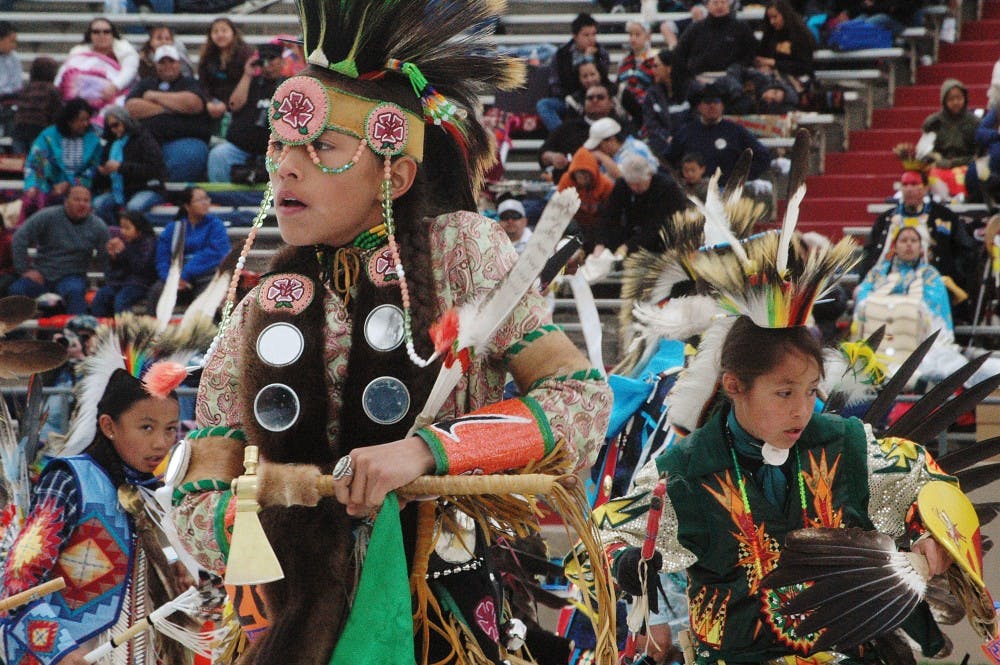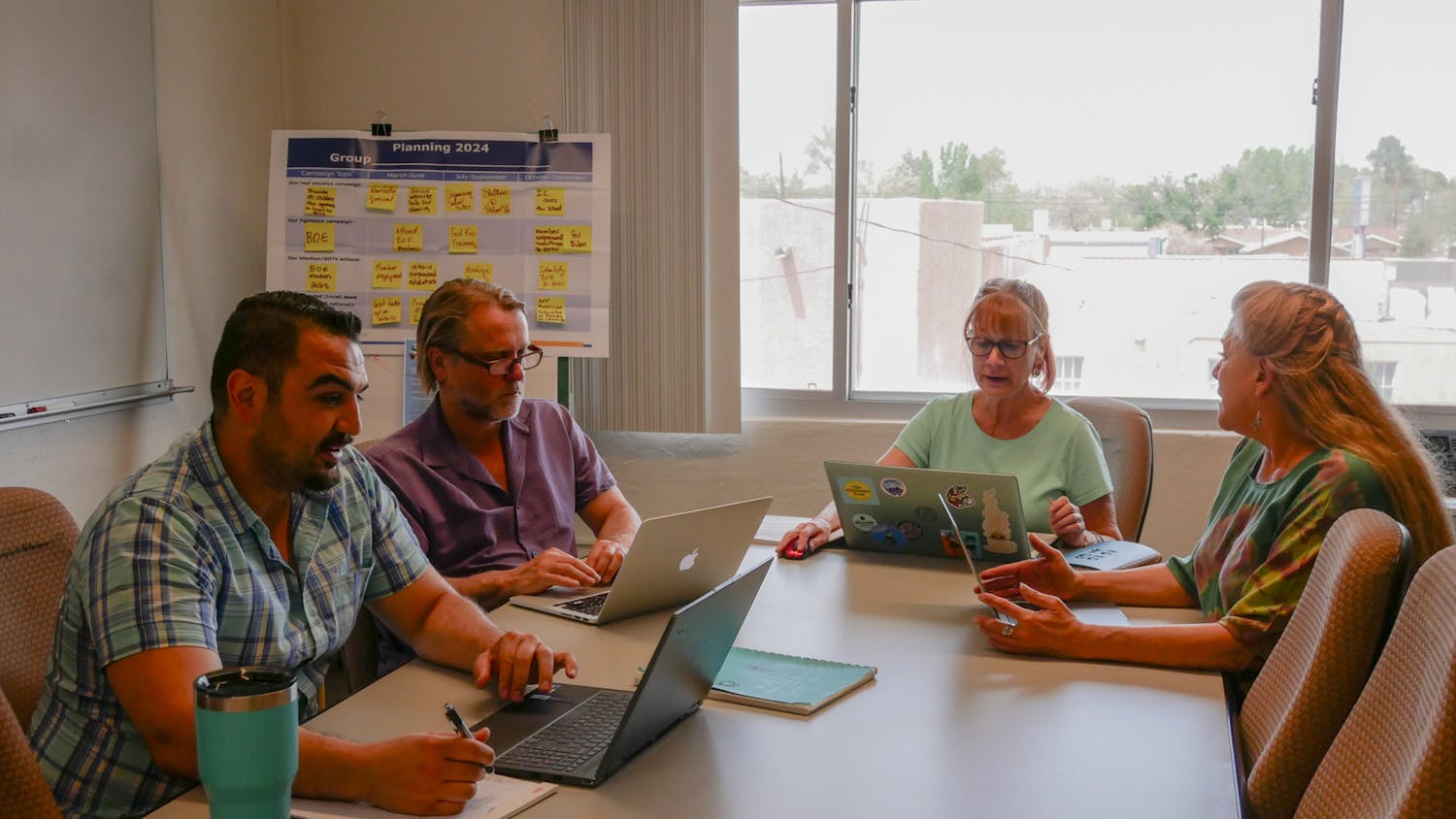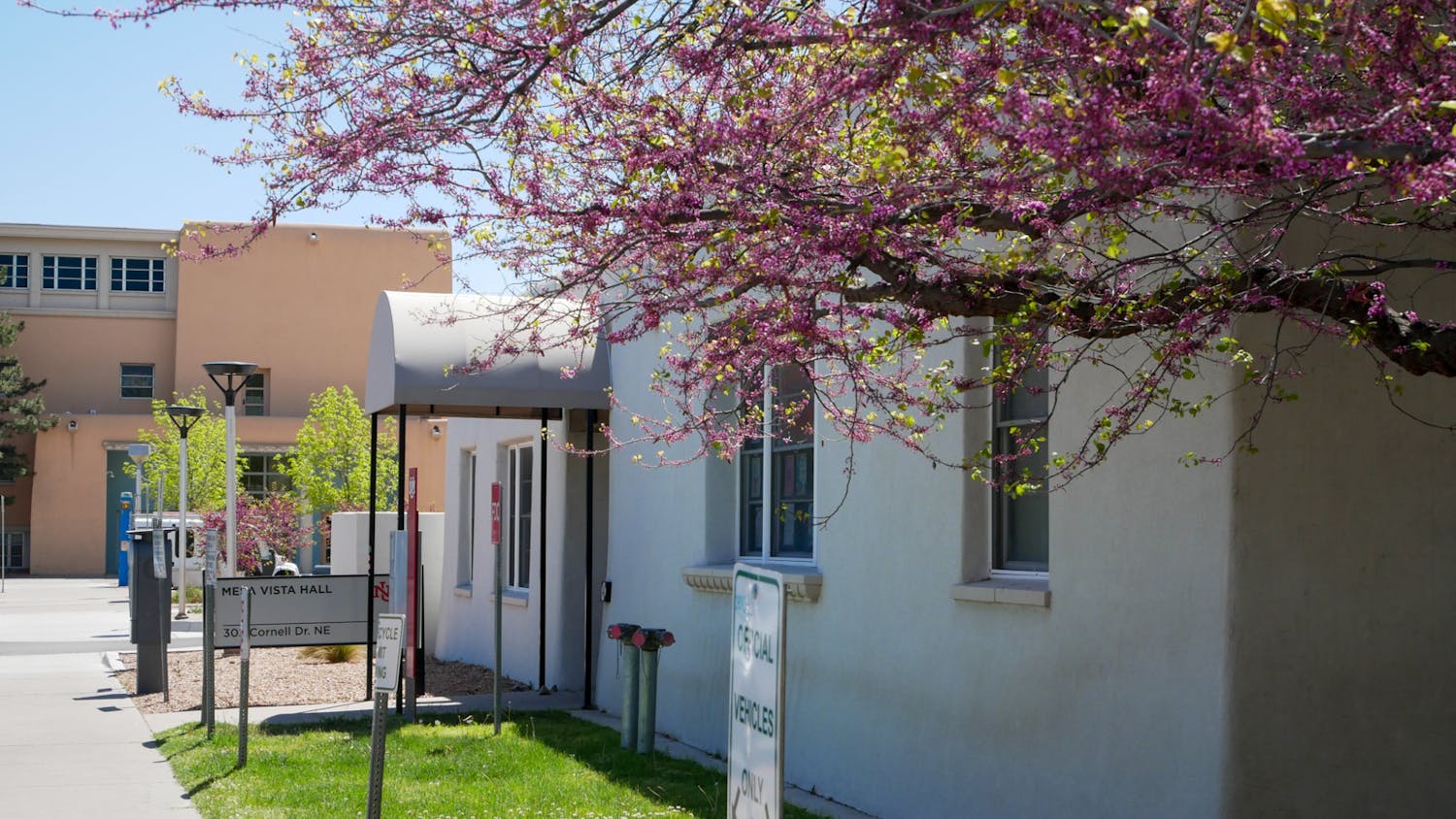Booth fee: $500
Round trip gas from Canada to Albuquerque: $850
Hotel: $350
Participating in the nation’s largest powwow: priceless.
The Gathering of Nations powwow stormed into University Stadium this weekend for Native American music, dancing, food, art and seminars.
Officials said more than 130,000 people attended the event.
However, the rising cost to attend damaged the perception that the gathering is helping the Native American community, said Wyndsor Yazzie, president of the UNM KIVA Club.
“The gathering is too commercialized. It’s a cultural appropriation and cultural commoditization,” Yazzie said.
The KIVA Club is the largest Native American student organization at UNM, Yazzie said.
According to its website, the Gathering of Nations is a Native American Indian nonprofit organization, “founded in 1983 to promote Native American, American Indian (indigenous) culture and tradition and dispel stereotypes created about Native American Indians.”
The organization was created by Derek Mathews — who is not Native American — along with his wife. They wanted to create a competitive powwow that was fair and neutral from tribal influence.
In a Myspace posting, Mathews defended the Gathering of Nations against its critics.
“No one is exploited and many people benefit from the event,” he said. “Over $2 million is received by the vendors at the Indian Traders Market. The gathering is a major employer of Natives and nonNatives for the weekend and a major event that stimulates the economy at a local, state and national level.
In a phone interview, he said that 90 percent of profits go toward covering the nearly $1 million it costs to put the event together.
“Nothing is free,” he said. “We have to pay out awards. The stage costs were $20,000 this year. We have to cover insurance and lighting. In terms of admissions, that’s how we pay the bills.”
Mathews said other large powwows that have corporate or casino sponsorship get trimmed or eliminated altogether when investors notice their bottom line doesn’t show a large profit. He attributes hard work and months of planning to ensure the gathering does not go down the same path.
Alternatively, since 2006, the KIVA club hosts a traditional powwow free-of-charge the day after the gathering on Sunday. Dancers and singers participate for free and are not judged on competitive style. Vendors pay a $50 booth fee that directly assists Native American students through the KIVA club, Yazzie said.
“It’s out in the open. Everyone is free to come and go as they please,” he said. “It brings communities together.”
Yazzie said more than 3,000 people attended the event, including 45 vendors and more than 100 singers and dancers. While the student powwow is a blip on the radar when compared to the gathering, Yazzie said the event is important to develop a relationship between UNM and the Native American student community.
Alexandra Rosetta, a UNM freshman, said she danced at both events this weekend. She said she sees the gathering as a popular event and looks forward to it each year.
“I think it’s a good thing, you have people from up north come down and show their moves,” she said. “I still think small powwows are more fun because you see people you know. It’s not competitive and you just go out there and have fun.”
Stan Natchez, a painter who paid $500 to have a booth at the Gathering of Nations, said he recognizes the commercial nature but sees the event as a great way for people to get together.
“It’s a double-edged sword,” he said. “We live in a time of rapid change in life and people have to understand that the powwow changes with the time that we live in. They might see it as commercial on one hand, but it brings together dancers from all over the United States and Canada.”
Get content from The Daily Lobo delivered to your inbox
Dennis Bowen Sr. introduced singers and dancers for the Gathering of Nations and the KIVA powwow. He has participated in powwows since the early ’60s and witnessed the evolution of traditional ceremonies grow into colossal money-making machines.
“We became commercialized in the late 1970s,” Bowen said. “The people have accepted the commercialization. There is even dance styles and dance regalia that has evolved to fit competitive styles.”
Bowen said he has been to 18 powwows this year and heard the debate of traditional versus competitive at each one.
“It’s a paradox. Are we able to maintain the dignity of our old ways? How will we keep that intact because things are changing all around us?” he said.
Still, he said the commercialization of the powwows does not take away meaning from the event.
“You still have mother Earth where we dance off,” he said. “We still have songs and people still like to dance.”






